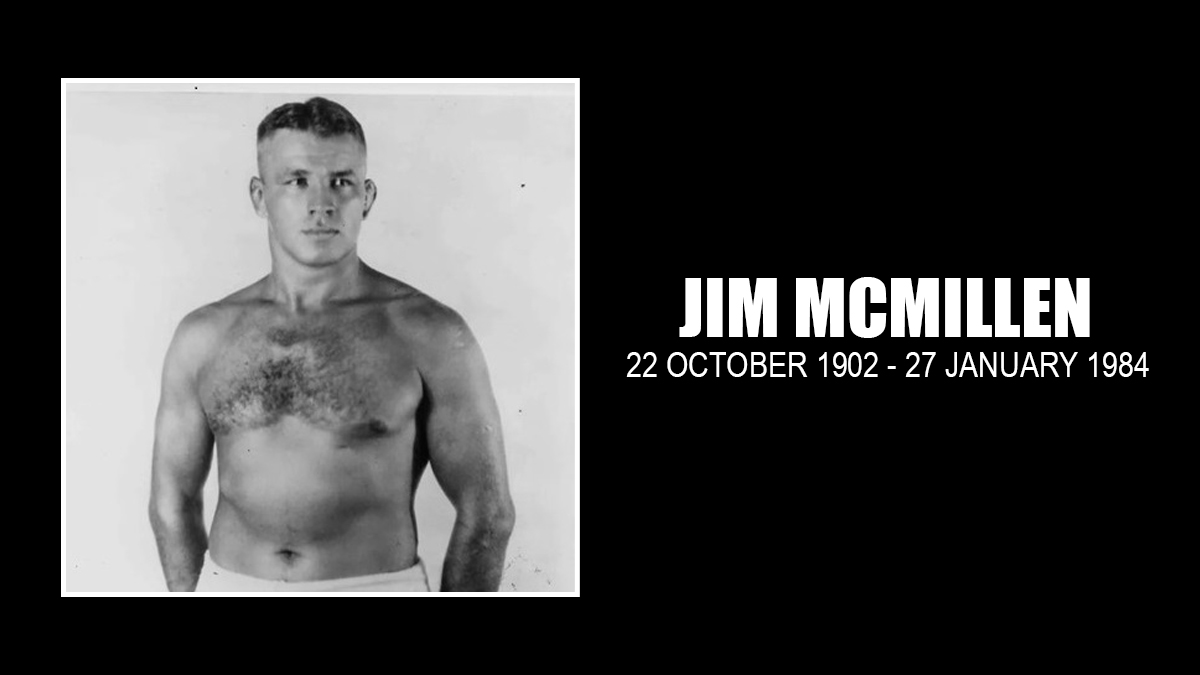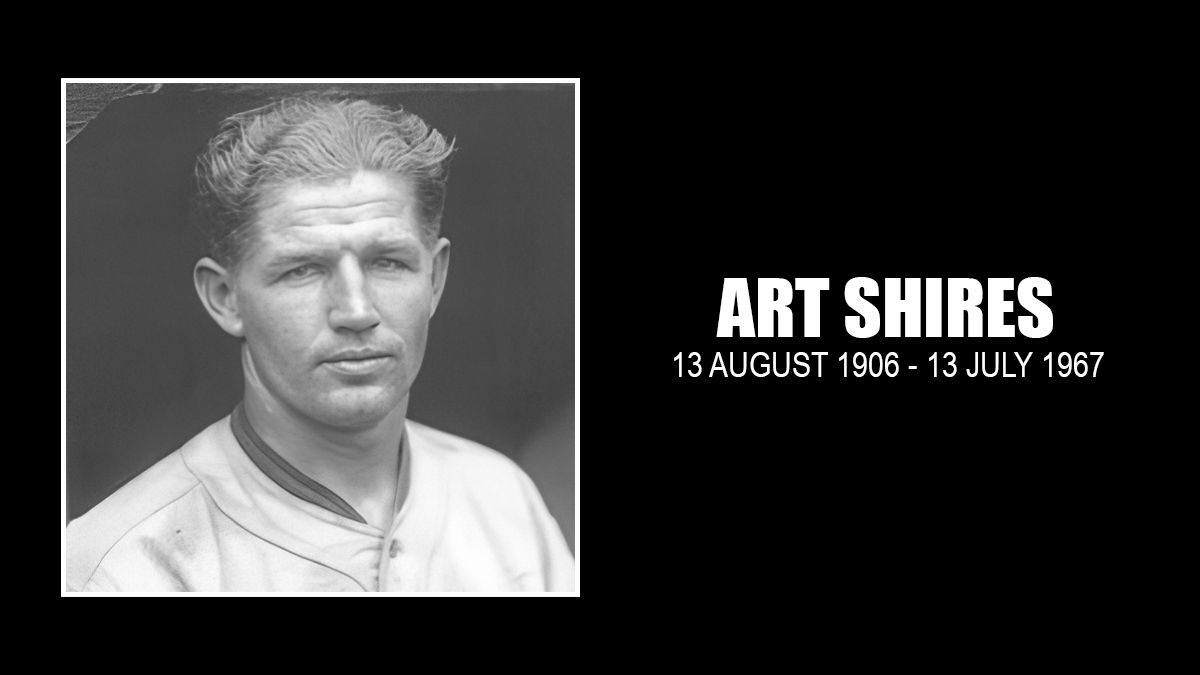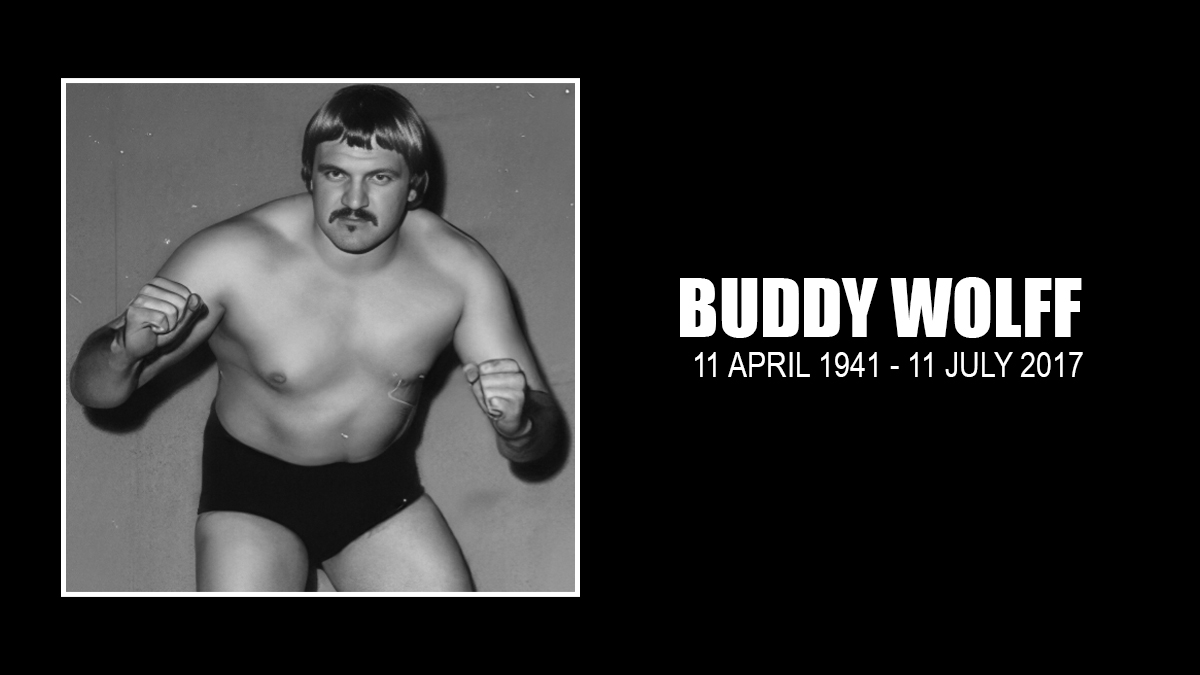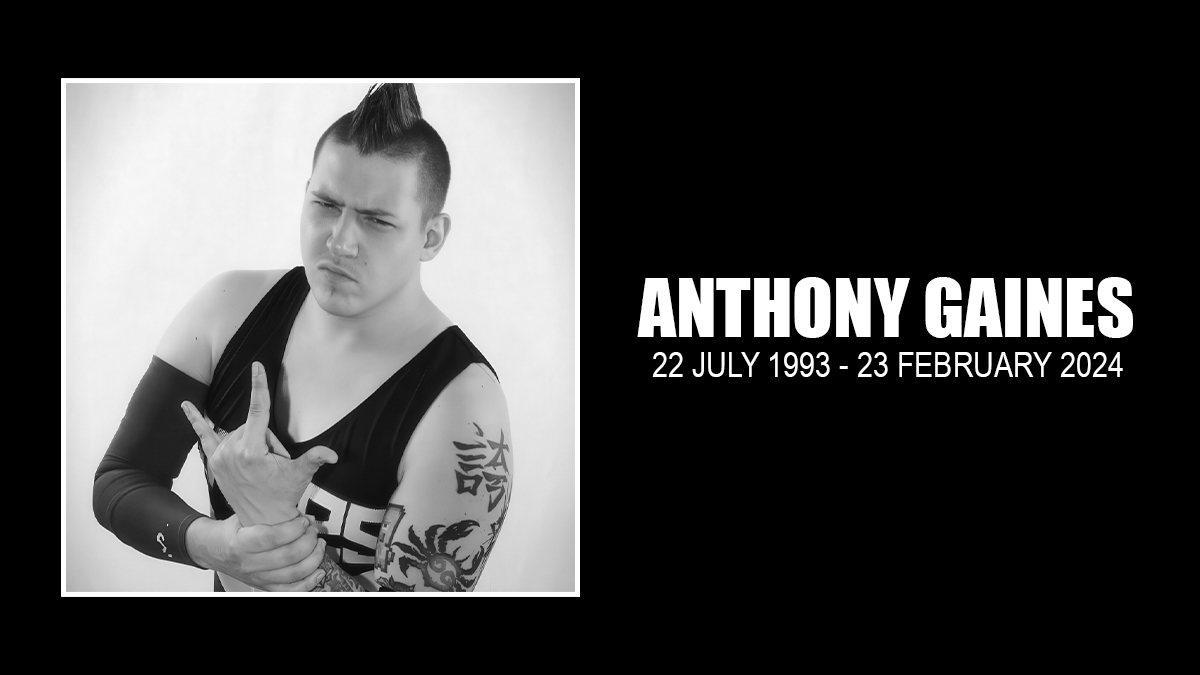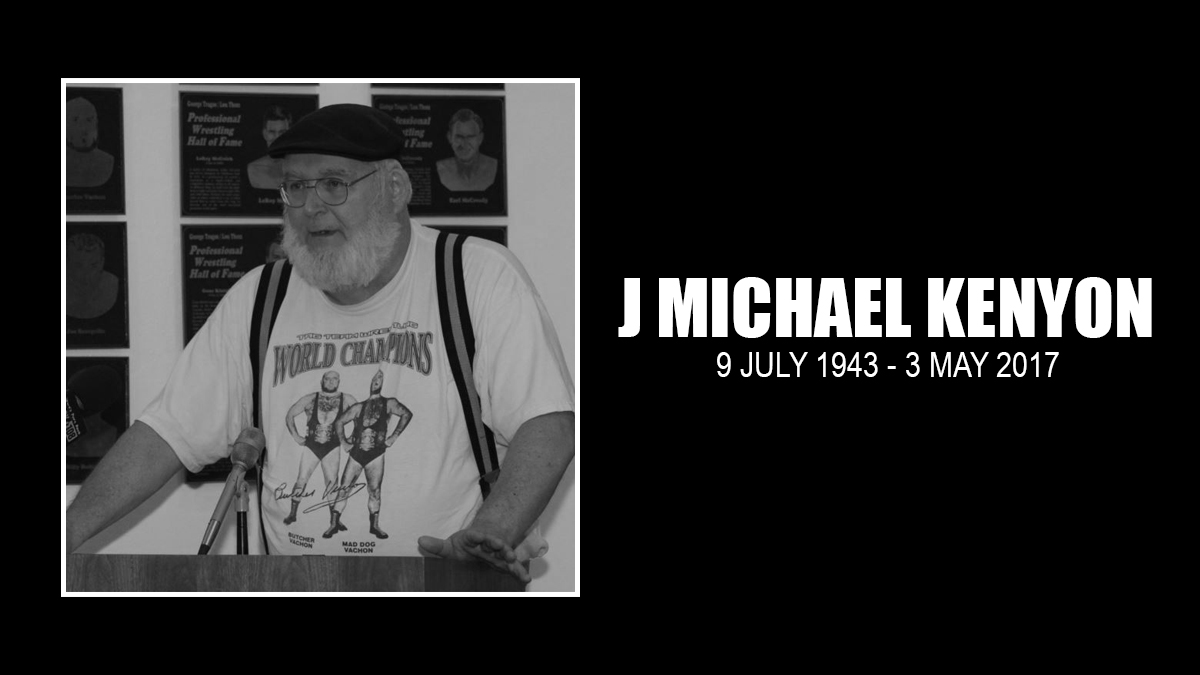In the professional wrestling world of the 1930s, one of the biggest box office draws was the legendary Jim Londos (1897-1975). Londos was the main event and champion performer on the top four drawing wrestling cards of that decade as reported in the 1950 publication, The Wrestling Scene.
His opponent in the #3 and #4 ranked cards, Jim McMillen, is rarely talked about, though.
Both of the bouts took place at the third version of New York City’s Madison Square Garden, on 8th Avenue at 49th Street in early 1931. Under the promotional leadership of Jack Curley (1876-1937), these Londos vs. McMillen bouts drew a gate of $59,496 on January 31, 1931, and on February 19, 1931, the box office take was $60,216, the equivalent of $1.1 million in 2024 dollars.
The Associated Press reported the day after the first match-up claiming, “if this keeps up, they’ll turn Madison Square Garden over to the wrestlers entirely.”
The first New York City match was so big that it was written up in the February 2, 1931, edition of Time Magazine; their writer proclaimed “for 56 minutes, 54 seconds, they grunted, sweated, and flopped with terrific thuds on the canvas.”
Of course, those were not McMillen’s only bouts during his career. The wrestling website www.cagematch.net documents a total of 599 matches involving McMillen from 1929 to 1937, his peak years as a full-time wrestler, a formidable accomplishment in the golden era.
Where did this James McMillen come from to emerge as a top-of-the-line heavyweight professional wrestler during the 1930s? What was his athletic background that enabled him to rise to a top challenger to Londos at only 28 years old? Did McMillen play football and wrestle as an amateur prior to this professional wrestling debut on February 14, 1927, against Scotty McDougall at Chicago’s Dreamland Ballroom? Who were his most prominent wrestler opponents and what bigtime wrestling promoters of that era utilized his services during the decade? What did McMillen do when he hung up his wrestling tights as he aged? We shall now discover that James McMillen had one of the most interesting and diverse careers both inside and outside of the square circle.
Early Development
James Willard McMillen was born on October 23, 1902, in Grayslake, Illinois, a far north suburb of Chicago. His father was Willis John McMillen (1873-1944) who worked as a mason and later owned his own company. His mother was Maud Minerva Seeholts McMillen (1877-1934) who was a housewife. The couple had one daughter named Leila Minerva Faulkner Osborne (1900-1994). The family lived in Grayslake but young James would ride a milk train daily to attend high school in Libertyville, a 15-mile trip.
At the start of his junior year, there were only 138 students and seven teachers in the entire school. When McMillen was inducted into the Libertyville High School Hall of Fame in 2021, the school proclaimed that “Jim was our clear star athletic star, and he led our football team to a 7-1 record.” They added “[In] his senior year, he was the top running back and lead our team to a 6-1 record.” Other famous alumni of Libertyville High School included U.S. presidential candidate Adlai E. Stevenson, actor Marlon Brando, baseball player Brett Butler, and guitarist Tom Morello of Rage Against the Machine. McMillen graduated with the Class of 1920 and moved on to bigger and better places.
Standout at the University of Illinois
After high school ended, McMillen attended the University of Illinois in Champaign, Illinois, where he excelled in both football and wrestling. In his senior year, the Fighting Illini posted a record of 8-0 under the coaching of Robert Zuppke (head coach 1913-41). The Illini won all five Big 10 conference games in 1923, defeating Iowa, Northwestern, Wisconsin, Ohio State, and the University of Chicago. The Illini outscored their opponents 138 to 20 for that season and were recognized as national collegiate champions by many sources at the time (prior to the formal NCAA tournament).
McMillen was a starting offensive guard and captain of the team his senior year. He was so good as a lineman that the rival head football coach at the University of Michigan said “James McMillen is the best guard in the conference, and probably the country.” As a result, McMillen was selected as an All-American football lineman in his senior year, one of only 12 collegiate football players getting that designation. Another All-American was teammate Harold “Red” Grange, whom McMillen was a key blocker on the offensive line. Grange rushed for 723 yards and scored 12 touchdowns in seven games that same season. One of the highlights of the season was a 29-0 victory over the Northwestern Wildcats on October 27, 1923, held in Chicago at Cubs Park, now known as Wrigley Field.
Besides football, McMillen excelled in intercollegiate wrestling for his final three years at Illinois in the heavyweight category. The February 23, 1925, Chicago Tribune noted “McMillen was the champion wrestler of his university and lost but one match, and that to (Harry) Steel of Ohio State.” Steele would go on to win a gold medal at the 1924 Olympics in the Heavyweight Freestyle wrestling category. The Illini wrestling team went undefeated in 1923 and tied with Indiana at the top of the Big Ten conference standings. McMillen eventually graduated with an Engineering degree from the School of Mining. His senior yearbook profile reveals his nickname was “Lard”. He was a prominent member of the Sigma PI fraternity whose national yearbook, The Emerald, profiled him in the January 1923 edition. In that piece, McMillen stated that his only weakness was “his fondness for women.” For all of his athletic achievements, McMillen was inducted into the Fighting Illini Hall of Fame in 2021, joining NFL legends Dick Butkus and Ray Nitschke and fellow professional wrestler Ralph “Ruffy” Silverstein. McMillen’s son, James, Jr., would follow his dad to the Illini wrestling team and Sigma Pi in the mid-1950s.
Turning Pro with the Chicago Bears
After graduating from the University of Illinois, McMillen signed as a free agent with the Chicago Bears for the 1924 season (the current draft system for college players did not start until 1935). The Bears were owned and coached by the legendary George Halas, also an alumnus of the University of Illinois. On August 20, 1920, Halas was part of the original organization of the American Professional Football Conference, which assessed a $100 membership fee to each team and conducted the meeting in an automobile showroom in Canton, Ohio. Halas’ initial team was the Decatur Staleys, named after its sponsor A.E. Staley Manufacturing, a corn and soybean processor. Later on June 24, 1922, the league was relabeled the National Football League with Halas’ team now relocated to Chicago, renamed the Chicago Bears, and playing its games in Cubs Park. At the start of the 1924 season, McMillen stood at 6-foot-1 and weighed 215 pounds as a rookie guard. Biographer of Halas, Jeff Davis, noted in Papa Bear: The Life and Legacy of George Halas, that McMillen’s teammate Ed Healey played for only $100 per game, likely similar to what McMillen earned. The NFL was not yet a cash cow and even Halas had a supplemental job as a car salesmen to earn money. The Bears posted a record of 6-1-4 that 1924 season, good for second place in the NFL standings based on the win and loss percentage. There were 18 teams in the NFL for the 1924 season, some teams familiar to modern fans like the Green Bay Packers and Chicago Cardinals, but the overwhelming majority are no longer in existence such as Milwaukee Badgers, Cleveland Bulldogs, and Kansas City Blues.
McMillen played for the Bears for the 1925 season and experienced a blockbuster event when his old college teammate at Illinois, Harold “Red” Grange signed with the Bears on November 22, 1925, upon the completion of the Illini football season. The signing was too late to materially impact the Bears’ NFL standings with a record of 9-5-3, resulting in a disappointing seventh place finish. However, things were not totally lost with the acquisition of Grange. The Bears played exhibition pick-up games in December 1925 against non-NFL teams, sandwiched in between their regularly scheduled games to showcase their hot commodity. The biggest audience was 68,000 fans at the Polo Grounds against the New York Giants on December 6, 1925. Immediately after the regular season, the Chicago Bears, in conjunction with Grange’s representatives, organized a barnstorming football exhibition tour starting in January 1926. They traveled via train to the States of Florida, Louisiana, California, Oregon, and Washington showcasing Grange, with McMillen participating as the dutiful blocking linemen for the famed halfback. A retrospective article in Sports Illustrated dated January 30, 2024, pointed out “Grange collected two checks from the barnstorming tour for $50,000 each and another for $100,000,” a considerable sum for an athlete in the 1920s. Writer Gene Chamberlain added, “The NFL was on a path toward its eventual status as America’s game as a result of the 1925 Chicago Bears and Red Grange.”
McMillen would play three more seasons in Chicago, with the best record of those years being 1926. The Bears posted record of 12-1-3 and ranked second behind the Frankford Yellow Jackets, the only team who beat the Bears that season. Frankford actually was a neighborhood within the city limits of Philadelphia and would be rebranded as the Philadelphia Eagles in the early 1930s. Grange was no longer on the Bears for the 1926 season after unsuccessfully demanding a big salary and an ownership stake in the team itself (Halas rejected his demands). Grange would then play for a few seasons with the New York Yankees of the start-up and short-lived American Football League.
It was during this period when McMillen began moonlighting in the professional wrestling field with three documented matches in February and March 1927, all held in his home region of Chicago. In all, McMillen wrestled 15 times during the full years 1927 and 1928 while getting in-the-ring training and experience in this pro wrestling business. It is believed that his above-average physical stature, football reputation, and his amateur wrestling background were attractive to local wrestling promoters. The 1928 NFL season was the last hurrah for McMillen as an active player, but new doors were gradually opening up for him to apply his physical skills.
Full Time Wrestling
Once wrestling full time, McMillen consistently worked for the top wrestling promoters in the United States and Canada. That list included Jack Curley in New York; Ray Fabiani in Philadelphia and Boston; Tom Packs in St. Louis, Nashville, and Kansas City; Fred Kohler and John Krone in Chicago; Tony Stecher in Minneapolis; Jack and Lou Daro in Los Angeles and San Diego; and Jack Corcoran in Toronto (prior to Frank Tunney years). McMillen worked all the major indoor venues such as the Chicago Stadium, Madison Square Garden, the St. Louis Arena, the Olympia in Detroit, Public Hall in Cleveland, Maple Leaf Gardens in Toronto; Ellis Auditorium in Memphis; Olympic Auditorium in Los Angeles, Memorial Auditorium in Birmingham, the Arena in Philadelphia, and the Boston Garden. There were also appearances in large outdoor venues such as Yankee Stadium in New York, Griffith Stadium in Washington DC, and Soldier Field in Chicago.
A Toronto program from 1935 has PR man Frank Ayerst celebrating McMillen (though spelling it McMillan):
It was Gus Sonnenberg who introduced the flying tackle of football to the squared circles, but Jim McMillan capitalized on it to a greater extent and perfected his innovation to great advantage. One of the biggest money-earners in the game, McMillan estimated that a broken shoulder, which kept him out of action for three months, cost him $25,000 through assignments that had to be passed up. A veritable Dick Merriwell, Jim has been successful in many branches of sport. He starred on the gridiron with the University of Illinois, was an All-American selection, held intercollegiate boxing and wrestling titles and now retains an interest in football as one of the owners fo the Chicago Bears. He is an American, hails from Chicago and weighs 222 pounds. Height, six feet.
His opponents were a “who’s who” of professional wrestling during the 1930s and included Jim Londos, Ray Steele, Lou Thesz, Everett Marshall, George Zaharias, Gino Garibaldi, Ed Don George, Sandor Szabo, Strangler Lewis, Dick Raines, Gus Sonnenburg, George Tragos, and Joe Savoldi. McMillen would also wrestle individuals who would later promote professional wrestling such as Paul Boesch, Paul Jones, Kola Kwariani, Toots Mondt, Joe Dusek, Orville Brown, and Karl Sarpolis.
A syndicated column on February 26, 1935, asked McMillen to compare football to wrestling.
“I took plenty of knocks on the football field but I was never really hurt,” McMillen told writer John J. Romano. “A cold shower and I felt refreshed and ready to do it all over again. Not so with wrestling. At times my arms, body and legs have been so bruised from the other fellow’s holds that I could not sleep for a week. In one match with Strangler Ed Lewis I had headaches for a week from his vicious headlock.”
It echoed what he had told Ralph Davis of The Pittsburgh Press in April 1931: “Any mat match takes considerable out of a big man,” said McMillen, “but the exertion is not serious if the match is over in 25 minutes or less. After that, it begins to become hard work.”
Besides the above-mentioned big money dates with Londos at Madison Square Garden in 1931, McMillen would face Londos 11 more times in the 1930s at major venues. While McMillen’s record against Londos was only 1-11-1, McMillen provided formidable opposition to the legendary Greek wrestler during his reign. The Washington Post on September 8, 1931, reported on their match-up in Chicago’s Soldier Field where Londos won both falls but the writer gave credit to McMillen “as one of the most persistent challengers for the title.” The pair drew good gates as the Washington Post on November 23, 1933, commented on their Chicago Stadium bout as “a crowd of 12,314 spectators paid $17,014 to see Londos repeat his many triumphs over McMillen.” It can be reasonably said that Londos could not have been the major attraction without top quality opponents helping him along the way. The importance of challengers in championship wrestling was duly noted by Larry Matysik in his St. Louis record book saying “it always took and takes two to tango.”
On his own in the ring, McMillen had a standout ring record. According to statistics compiled by compiled by cagematch.net, McMillen posted a record of 347 wins (57.9%), 74 losses (12.4%), and 178 draws (29.7%) from 1929 to 1937 (full time years).
Minority owner and VP of the Chicago Bears
McMillen made a lot of money during this professional wrestling career, including $4,660 and $5,000 for each of his Madison Square Garden bouts against Londos in 1931. In his Halas biography, Davis reported that “In 1931 alone, he (McMillen) took in $40,113 through wrestling.” This happened during the Great Depression when the average income was only $4,887. Later in 1931, McMillen paid George Halas $5,000 for nine and three-eighths shares of the Chicago Bears, equal to one-sixteenth of the team’s stock (as reported by Jeff Davis). At this time, he also was appointed as a vice president of the Bears, a position he held until 1960. Soon after McMillen’s buy-in, he provided additional needed cash advances to support the financially-strapped Bears through some tough years. However, starting in 1935, McMillen was repaid those funds in addition to an annual dividend of $1,000, a great return on a $5,000 original investment.
With McMillen as vice president, the Bears began to experience the greatest successes of their young NFL franchise history, winning the NFL World’s Championship in 1932, 1933, 1940, 1941, 1943, and 1946 seasons. The 1932 championship game was played indoors at Chicago Stadium on a short 80-yard field due to inclement weather. The Bears defeated the Portsmouth Clippers 9-0 with Grange back in the line-up as well as Bronko Nagurski (who would later wrestle professionally). The Bears became known as the Monsters of the Midway with their success. McMillen would continue with his minority ownership stake until 1954 when he and Halas agreed on the price of $40,000 for the shares. McMillen needed money for college tuition for his son James Jr. Decades later, McMillen’s daughter, Ann Kakacek later told Jeff Davis her father “would not have sold out to Halas had he known how big television money would become.”
World War II and public servant
Prior to the Japanese attack on Pearl Harbor in Hawaii on December 7, 1941, McMillen served in the U.S. Naval Reserve as an administrator and physical fitness instructor at Chicago’s Navy Pier. Once World War II broke out, Lieutenant Commander McMillen moved into the Pacific Theatre, supervising physical training and recreational activities in Noumea and Caledonia, islands about 750 miles east of Australia. McMillen’s daughter, Kakacek, indicated that pioneer TV talk show host Jack Paar was one of the entertainers visiting those Naval bases at this time. McMillen remained stationed in Caledonia until after the war and was unable to attend the funeral of his father in 1944.
Upon his return to the U.S., McMillen settled in Antioch, Illinois, a northern Chicago suburb. McMillen served in the volunteer fire department and rescue squad in Antioch, always having his uniform hung up and ready to go when the alarm sounded. Antioch is an area surrounded by many recreational lakes, and McMillen had to deal with many boating and snowmobile fatalities during these years. Eventually, McMillen was twice elected Mayor of the Village of Antioch (population 1,307 in 1950) in both 1949 and 1953. Antioch would prosper under McMillen with the population growing 73.5% to 2,268 by 1960.
Professional Wrestling Referee
Late in 1950 or early 1951, Chicago kingpin wrestling promoter, Fred Kohler, called McMillen with an offer to be a professional wrestling referee at Kohler’s venues, namely the Marigold Gardens and International Amphitheatre.
The news made the papers. “Jim McMillen, 48 year old ex-football star with Illinois and the Chicago Bears, has been granted a license to referee wrestling bouts in Illinois,” noted the Chicago Tribune on April 3, 1951.
Significant film footage from the Amphitheatre survives to this day at the Chicago Film Archives, originally produced by Russ and Sylvia Davis. McMillen’s vast pro wrestling experience was surely a factor in him getting this appointment from the Illinois State Athletic Commission. McMillen was a regular official at the Amphitheatre, sometimes getting the big assignments on the card.
On September 14, 1956, McMillen was one of the two referees for a rare six-man tag team match featuring many legends of the business; team #1 consisted of Verne Gagne, Wilbur Snyder, and Antonino Rocca while team #2 consisted of Dick the Bruiser plus Stan and Reggie Lisowski (later known as The Crusher). McMillen surely had his hands full with all those guys, but was probably the best choice to help maintain law and order in the ring.
Wrestling Life magazine dated June 1957 featured a championship bout where McMillen served as the referee. U.S. Heavyweight Champion Wilbur Snyder defended his title against Dick the Bruiser, which took place on the Amphitheatre card on April 26, 1957. A photo caption read “Bruiser starts his roughing tactics, draws warning from the referee for kneeing.” To nobody’s surprise, Dick the Bruiser was disqualified that night, enabling Snyder the hold onto his championship belt. McMillen continued as a referee until 1958 when he was 56 years old.
Epilogue
McMillen continued to work into his 60s and 70s, first as a field engineer and then as a supervisor with the Illinois Department of Conservation until 1968. That agency enforced game and fishing codes, issued hunting and fishing licenses, acquired lands and waters for hunting and fishing, and developed and maintained the public hunting and fishing areas. McMillen was personal friends with Illinois governor Otto Kerner (D), but lost any pull — and his job — when Kerner became a Federal judge and the Republicans won the gubernatorial election in late 1968.
After that, McMillen became as engineer for the Forest Preserve District of his native Lake County, Illinois, until 1978, when he was about 76 years old. In his later years, McMillen contracted breast cancer, a disease not usually associated with men, and his physical and mental abilities slowly deteriorated as with many people in their 70s and 80s. During his cancer treatment, McMillen would frequently get flower deliveries from his football friend George S. Halas, who himself would pass away on October 31, 1983. The flower deliveries would continue afterwards from Virginia McCaskey, daughter of Halas.
The end came for McMillen on January 27, 1984, at Lake Forest Hospital in Lake Forest, Illinois, at the age 81. The obituary in the Antioch News dated January 30, 1954, reported that survivors included his wife of 57 years, Phyliss (nee Morley); his son, James John (Diana) of Farmington, MO; his daughter, Phyliss Ann Kakacek (John) of Antioch; and one sister, Leila (Sam) Osborne of Florida. McMillen’s son-in-law, John Kakacek, was a professional wrestler from 1956 to 1976 under the ring name of Johnny Kace, wrestling primarily in the Midwest towns of Chicago, Milwaukee, Minneapolis, Indianapolis, and Detroit. Funeral services for McMillen were held at the Strang Funeral Home in Antioch followed by a cremation.
James Willard McMillen led a full and successful life. From standout high school athlete, to All American College Football player and notable fraternity brother, to pioneer NFL offensive lineman, to top-notch professional wrestler, to a valuable NFL franchise co-owner and executive, to proud-serving Naval officer in World War II, to twice elected mayor of his hometown community, to professional wrestling referee for a top promotion, and to dedicated civil servant devoted to preservation of our natural resources. He was also a proud and dedicated family man, who provided a great life to his wife and children. He certainly accomplished more than the average person and did many things few individuals would achieve.
